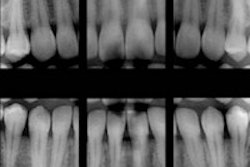Exposure to dental x-rays increases the risk of benign brain tumors but not malignant brain tumors, according to a new study in the Annals of Oncology (February 13, 2013).
An epidemiological study published last April in the journal Cancer prompted a flurry of media coverage and public concern because it claimed to have found a link between frequent bitewing x-rays and increased risk of developing meningioma, a largely benign brain tumor. That study also prompted outcry from the oral and maxillofacial radiology community, the ADA, and the Academy of General Dentistry, all of whom questioned the study's methodology -- the findings were based on self-reporting of past dental visits from childhood through adulthood by patients who had been diagnosed with intracranial meningioma -- plus the potential for recall bias and the fact that current x-ray exposure levels are lower than they were in the past.
In this new study, a team of researchers from Taiwan used Taiwan National Health Insurance claims data to evaluate the risk of benign brain tumors and malignant brain tumors associated with dental x-rays.
From this database they identified 4,123 benign brain tumor cases, 16,492 controls without benign tumors, 197 malignant brain tumor cases, and 788 controls without malignant tumors. The researchers then estimated the risks of both types of tumors in association with the frequency of dental x-rays the patients received.
According to the study authors, "multivariable unconditional logistic regression analysis showed that the risk of BBT [benign brain tumor] increases as the frequency of received dental diagnostic x-ray increases." However, they found no significant association between malignant brain tumors and dental diagnostic x-ray exposure.



















